Range Rover Evoque: Water Drain Panel Section
Removal
NOTE: The water drain panel section is manufactured from mild steel.
1. The water drain panel section is replaced in conjunction with:
- Rear bumper cover
- Tailgate
- Quarter panel
- Rear lamp mounting panel
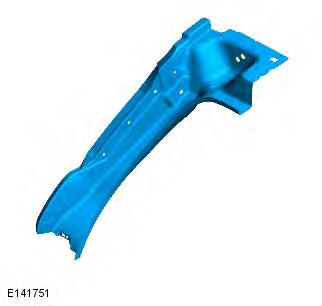
2. For additional information relating to this repair procedure please see the following: For additional information, refer to: Health and Safety Precautions (100-00 General Information, Description and Operation) / Body Repairs (501-25A Body Repairs - General Information, Description and Operation) / Corrosion Protection (501-25B Body Repairs - Corrosion Protection, Description and Operation) / Body and Frame (501-26 Body Repairs - Vehicle Specific Information and Tolerance Checks, Description and Operation) / Standard Workshop Practices (100-00 General Information, Description and Operation).
3. Remove the quarter panel.
For additional information, refer to: Quarter Panel (501-30B Rear End Sheet Metal Repairs - 5-Door, Removal and Installation).
4. Remove the rear lamp mounting panel.
For additional information, refer to: Rear Lamp Mounting Panel (501-30B Rear End Sheet Metal Repairs - 5-Door, Removal and Installation).
5. CAUTION: Care should be taken not to cut through into the inner panels. Cut the water drain panel as indicated.
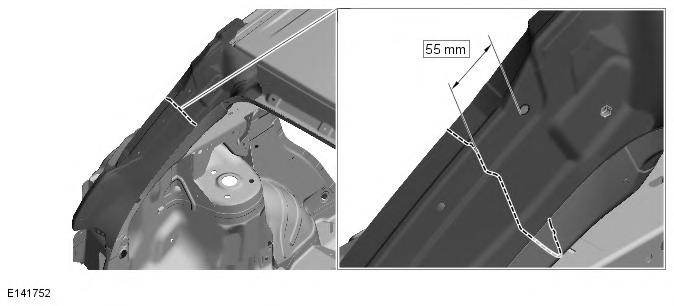
6. NOTE: It will be necessary to make a bulk cut through the water drain panel section to gain access to drill out the spot welds. Drill out the spot welds as indicated.
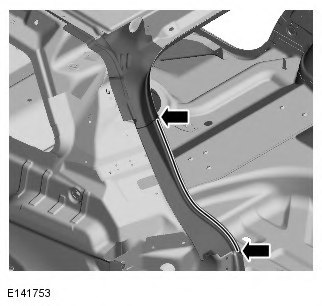
7. Separate the joints and remove the old panel.
Installation
1. Cut the new water drain panel as indicated.
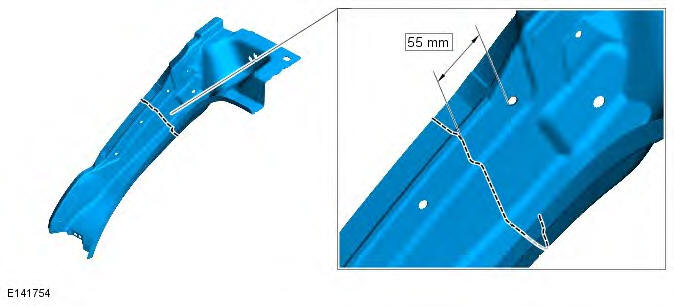
2. Offer up the new panel and clamp into position. Check alignment, if correct, proceed to next step, if not, rectify and recheck before proceeding.
3. Remove the new panel.
4. Drill hole in new panel ready for MIG plug welding as indicated.
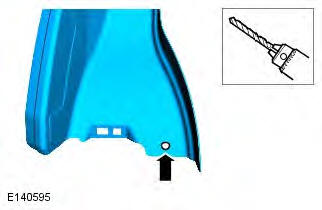
5. Deburr MIG plug location in new panel.
6. Prepare the old and new panel joint surfaces, including the NVH components.
7. Apply panel bonding adhesive to the area as indicated.
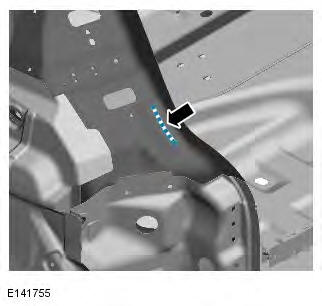
8. NOTE: Do not apply sealer adhesive in the area of the MIG plug weld location. Apply sealer adhesive to NVH component on rear lamp mounting panel where it contacts the water drain panel.
9. Offer up the new panel and clamp into position. Check alignment, if correct, proceed to next step, if not, rectify and recheck before proceeding.
10. Tack MIG weld the butt joint.
11. NOTE: This MIG plug weld will be installed within the rear lamp mounting panel procedure. MIG plug weld.
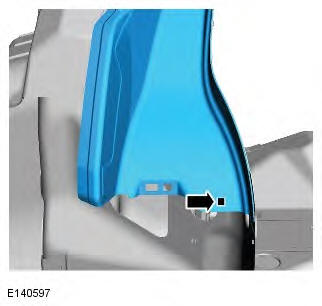
12. Spot weld.
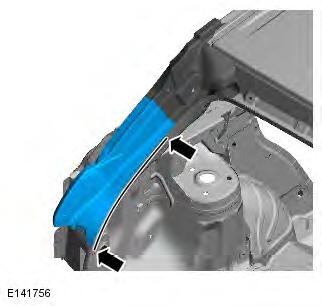
13. MIG weld the butt joint.
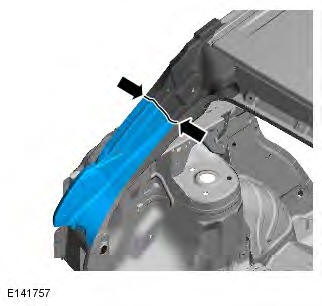
14. Dress all welded joints.
15. Apply a zinc rich primer to any bare metal surfaces at this stage.
16. The installation of associated panels and mechanical components is the reverse of removal.

